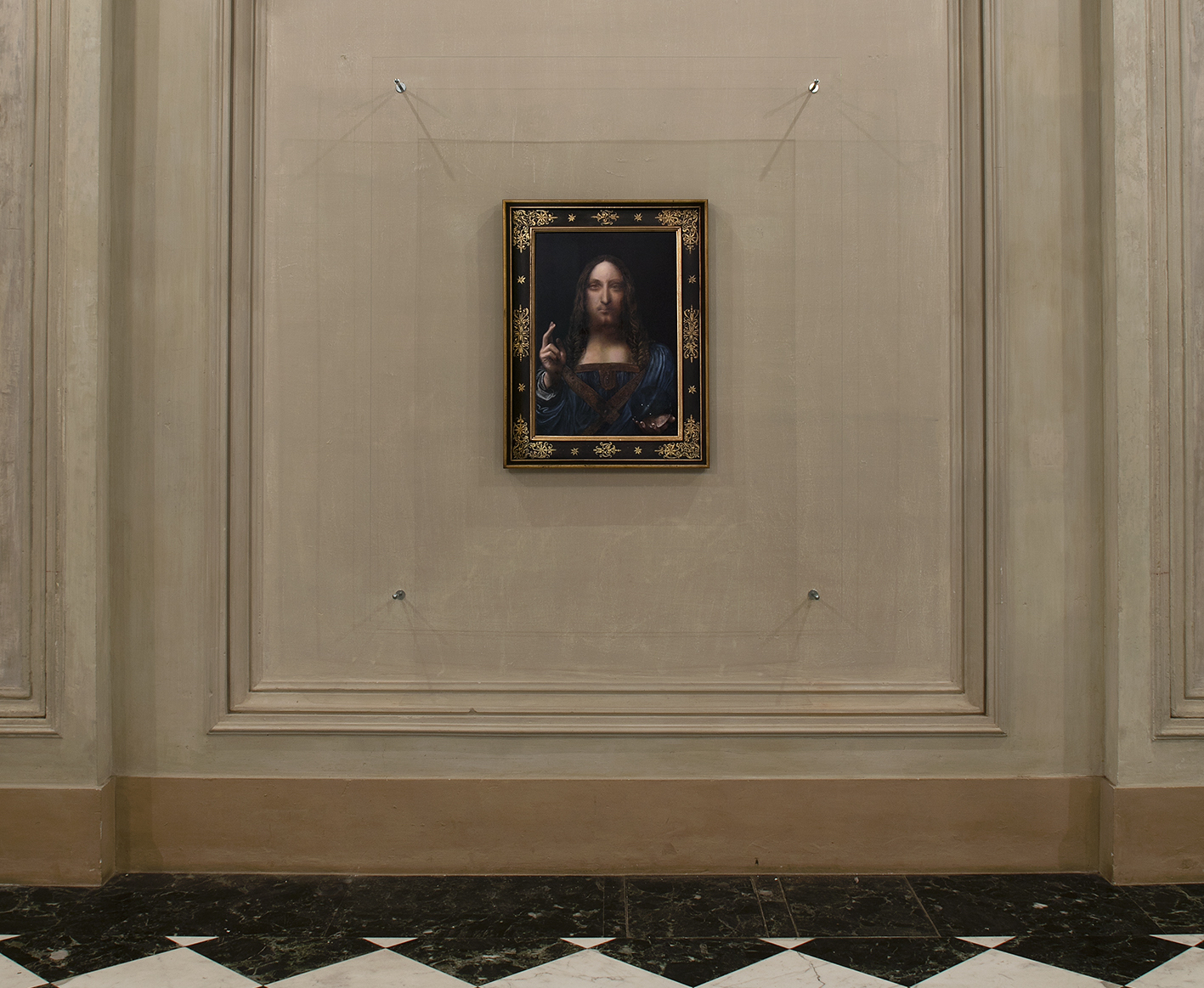[ad_1]

An uncanny copy for a canny project. The work in situ.
PHOTO: ANTONIO MANISCALCO. COURTESY CASTELLO DI RIVOLI MUSEO D’ARTE CONTEMPORANEA, RIVOLI-TURIN
A very familiar-looking Jesus—a Jesus that one might even call infamous—now hangs in the Castello di Rivoli Museo d’Arte Contemporanea in Turin, Italy. The work went on view Wednesday night, and in photographs, it looks indistinguishable from Leonardo’s Salvador Mundi (ca. 1500), the painting that sold for an astonishing $450.3 million at Christie’s in New York almost exactly two years ago.
But it is a new creation, the Castello di Rivoli revealed—a piece by the German-Turkish artist Taner Ceylan, a careful adopter of painterly styles. That announcement ended speculation that the museum had begun earlier in the week when it shared this rather unusual verbiage in a press release, “Will Castello di Rivoli … present a painting that could be the famous Salvator Mundi by Leonardo da Vinci?” Its director added that the plan was to show “a painting that makes the mystery of the Salvator Mundi even more exciting.”
Reached late on Wednesday at the museum, that director, the inimitable Carolyn Christov-Bakargiev, was eager to explain the genesis of the project, which addresses contemporary issues far beyond a single Old Master work, like the spread of fake news, the circulation of digital images, and even the finances of running a museum. But she quickly took issue with my first question: How does Ceylan’s painting differ from Leonardo’s Salvator Mundi?
“I believe your question is, How is this different from the one that was sold at Christie’s?” she said, detailing the debates among experts about the authenticity and quality of the work that netted nearly half a billion dollars. Though many Leonardo specialists believe the work is authentic, some have questioned whether he painted such a work and whether the painting in question is the genuine article, citing gaps in its provenance history.
At the moment, another version of the same image is hanging in the Louvre’s just-opened Leonardo retrospective, with Christ sporting a red outfit instead of the blue one that he wears in the record-setter. The location of that $450.3 million painting is not currently known, though it’s believed by some to be in the possession of the Saudis, perhaps on a yacht.
Christov-Bakargiev first took an interest in the painting in 2011, when it alighted at a Leonardo show at the National Gallery in London. Six years earlier, it had been plucked from a New Orleans auction by dealers for a four-figure sum (“masquerading as a copy,” in Christie’s parlance) and subsequently studied and restored by the conservator Dianne Modestini. “I’ve been most interested in the duration and the performative aspects of the whole thing: the white gloves, the mystery around it, whether it’s on the boat of the Saudi Prince,” she said.
She started cooking up the project shortly after the Christie’s sale with Ceylan, who’d previous copied a circa 1901 Giuseppe Pellizza da Volpedo for the 2015 Istanbul Biennial, which Christov-Bakargiev organized. The unveiling of Ceylan’s latest project was also timed to the opening of the Leonardo show, whose exact contents were not certain until the last moment, and there has been speculation that the Christie’s Leonardo could still end up in the Paris show. “I have like 10 different versions of the press release, in case it showed up,” she told me.
But back to Ceylan’s painting. Working from photographs, he made it just a tiny bit bigger than the mysterious work in order to avoid any copyright issues, Christov-Bakargiev said. “The actual painting itself is a very, very good copy. The main motivation for the artist is: Why should this great piece of art be taken away from public view? In other words, the question is about the democracy of art. Who does the painting belong to? The private owner who owns it, or does it belong to humanity? He figured, I’ll make it again and give it to the public.”
One could see this in the relatively recent tradition of appropriation art, but Christov-Bakargiev also pointed out that “copying is one of the great arts throughout history.”
And Ceylan’s painting raises some philosophical questions about authorship and attribution. Mentioning Thomas Campbell’s feather-ruffling comments that “inch for inch, conservator Dianne Modestini must be among the most highly-valued living artists in the world,” Christov-Bakargiev asked, “Why would she be worth more than [Ceylan]?”
The project, for Christov-Bakargiev, also forthrightly confronts an existential issue facing art museums today. “It’s hard for museums to pay insurance for paintings,” she said. “The value of art is so exorbitant, and it has become such a thing of status or pride for the small number of people who own so much of the planet’s wealth. They are making it very hard for artists and museums to do what they do, which is show beautiful things, which is create the shared public cultural heritage.”
This week’s experiment proposes one kind of solution. “Everybody can paint their own damn Leonardo,” she said.
[ad_2]
Source link

